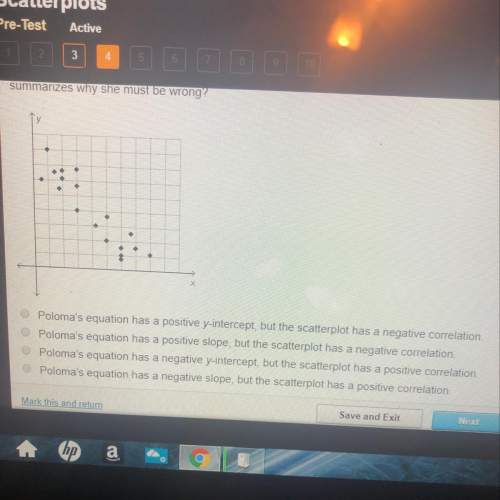
Mathematics, 17.03.2020 05:07 sindy35111
Starting with 10 blue balls, in each of 10 sequential rounds, we remove a random ball and replace it with a new red ball. For example, after the first round we have 9 blue balls and one red ball, after the second round, with probability 9/10 we have 8 blue balls and 2 red balls, and with probability 1/10 we have 9 blue balls and one red ball, etc. What is the probability that the ball we remove at the 11th round is blue?

Answers: 2
Another question on Mathematics

Mathematics, 21.06.2019 16:00
Afurniture manufacturer produces chairs and sofas. each chair requires 10 yards of fabric, and each sofa requires 20 yards of fabric. the manufacturer has 300 yards of fabric available. to fulfill orders, the number of sofas must be at least twice the number of chairs. let x be the number of chairs and y the number of sofas. which inequalities are described in the problem? check all of the boxes that apply
Answers: 2

Mathematics, 21.06.2019 17:00
Steve wants to develop a way to find the total cost of any item including sales tax. the sales tax in his city is 6%. his friend jenna writes the expression x + 6x where x is the cost of the item. explain whether her expression is correct based on the situation.
Answers: 1


Mathematics, 21.06.2019 19:00
The fraction 7/9 is equivalent to a percent that is greater than 100%. truefalse
Answers: 1
You know the right answer?
Starting with 10 blue balls, in each of 10 sequential rounds, we remove a random ball and replace it...
Questions


Mathematics, 07.10.2020 18:01




Chemistry, 07.10.2020 18:01

Chemistry, 07.10.2020 18:01


Mathematics, 07.10.2020 18:01

History, 07.10.2020 18:01


Geography, 07.10.2020 18:01



Mathematics, 07.10.2020 18:01

Mathematics, 07.10.2020 18:01

Biology, 07.10.2020 18:01

Mathematics, 07.10.2020 18:01


History, 07.10.2020 18:01

 . At the start of the process we have:
. At the start of the process we have:  =1.
=1.
 (red)=
(red)= =
=  ≈ 0.348678
≈ 0.348678


